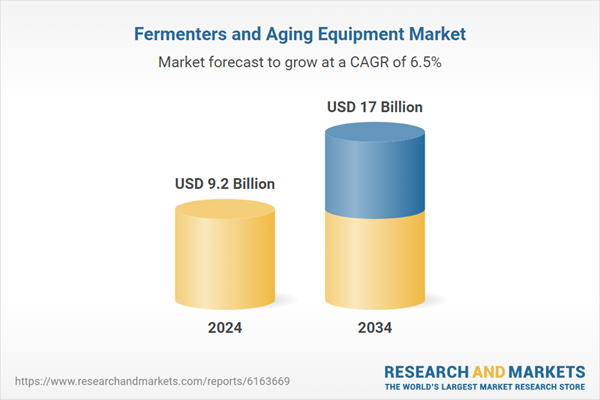The adoption of technologies such as automated systems and single-use fermenters has streamlined operations and improved production outcomes. Alongside, the food and beverage industry continue to push growth in aging equipment, thanks to the popularity of high-quality, naturally processed products. Interest in sustainability and natural food processing is another major catalyst, encouraging the integration of both fermentation and aging technologies across various manufacturing setups. Emerging economies in regions such as APAC are also playing a key role due to increased industrialization and infrastructure improvements that support the deployment of modern fermentation technologies.
Fermenters continue to dominate the overall market, owing to their wide-ranging usage across several industrial verticals. These systems play a crucial role in cultivating microorganisms and cell cultures essential for producing biologics, enzymes, therapeutic compounds, and fermented food items. Their applications are far more extensive when compared to aging equipment, which is generally more limited in scope. As demand for precision-driven and scalable production intensifies, manufacturers are actively investing in the development of next-generation fermenters. These systems incorporate features such as enhanced monitoring, automation, and contamination resistance. By enabling higher efficiency and adaptability, these innovations are making it easier for producers to respond quickly to market needs, especially in sectors where product consistency and purity are critical.
In 2024, the batch fermentation segment held a 53.4% share and is projected to grow at a CAGR of 7.3% through 2034. This fermentation method remains the most preferred across both biopharma and food industries because of its operational simplicity and broad adaptability. Batch processing allows ingredients to be added, processed, and removed in a controlled environment, offering a straightforward setup ideal for a variety of product categories. This technique is particularly well-suited to small- to medium-scale production runs, where precision, flexibility, and clean processing are paramount. It supports the manufacturing of high-value products that require detailed oversight without the complications of continuous or large-scale operations.
United States Fermenters and Aging Equipment Market held a 67.7% share and generated USD 1.7 billion in 2024. The country's dominance stems from its advanced pharmaceutical manufacturing landscape, sophisticated research facilities, and strong supplier networks. A rapidly evolving market for biologics and personalized therapies is fueling interest in more advanced fermentation solutions across both large-scale manufacturers and contract development organizations. The US continues to benefit from sustained public and private sector investments aimed at improving pharmaceutical output and innovation.
Key market players, including Thermo Fisher Scientific, Alfa Laval AB, Sartorius AG, Merck KGaA (MilliporeSigma), and GEA Group AG, are actively shaping the competitive landscape through strategic efforts. These firms are prioritizing research and development to introduce smarter, modular, and scalable systems that meet the evolving needs of bioprocessing and food industries. They are also expanding their global footprint through regional manufacturing hubs, localized service centers, and strategic acquisitions. Partnerships with academic institutions and biopharma companies help these players stay ahead of market shifts and rapidly test and deploy new technologies. By enhancing product performance, increasing automation, and offering integrated digital solutions, these companies are solidifying their market positions and responding to the demand for flexible and efficient processing technologies.
This product will be delivered within 2-4 business days.
Table of Contents
Companies Mentioned
The companies profiled in this Fermenters and Aging Equipment market report include:- Alfa Laval
- Applikon Biotechnology
- Bioengineering
- Bucher Vaslin
- Danaher Corporation
- Eppendorf
- GEA Group
- Merck
- Paul Mueller Company
- Sartorius
- STS Canada
- Tetra Pak
- Thermo Fisher Scientific
- Ziemann Holvrieka
- JVNW
Table Information
| Report Attribute | Details |
|---|---|
| No. of Pages | 186 |
| Published | July 2025 |
| Forecast Period | 2024 - 2034 |
| Estimated Market Value ( USD | $ 9.2 Billion |
| Forecasted Market Value ( USD | $ 17 Billion |
| Compound Annual Growth Rate | 6.5% |
| Regions Covered | Global |
| No. of Companies Mentioned | 16 |









